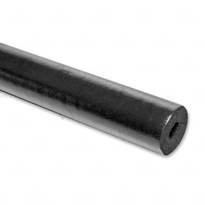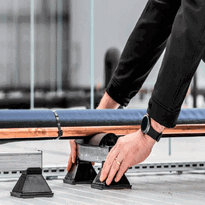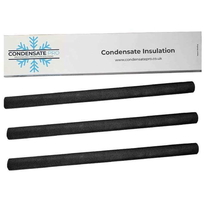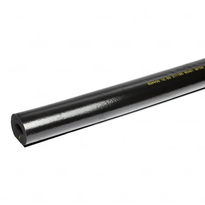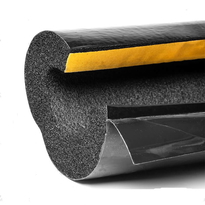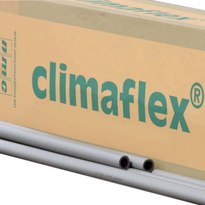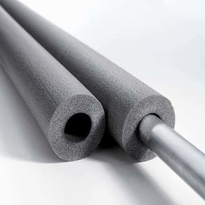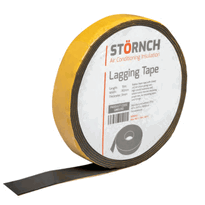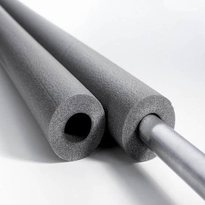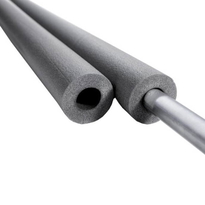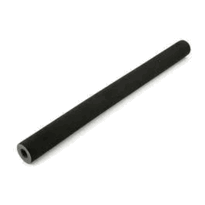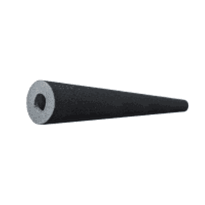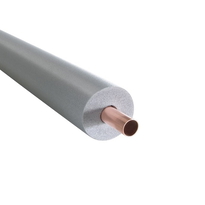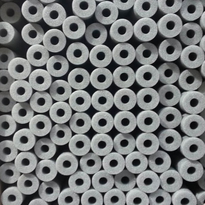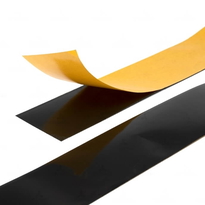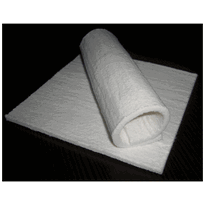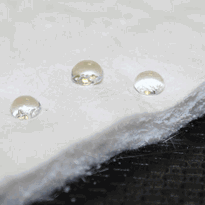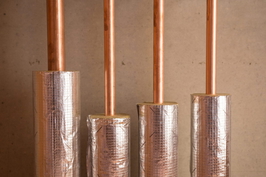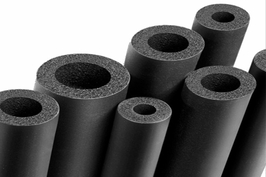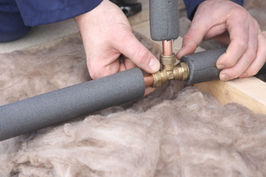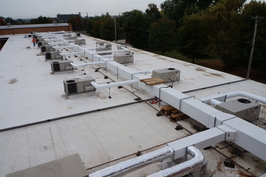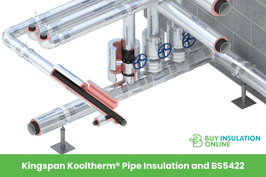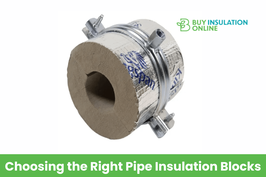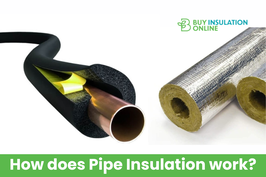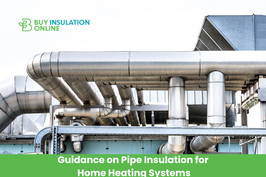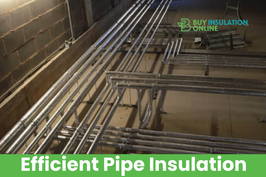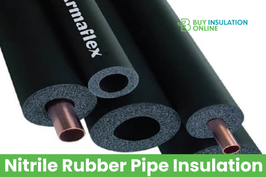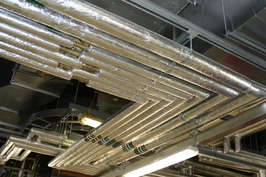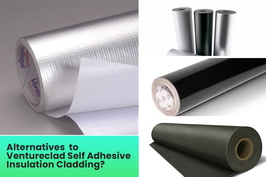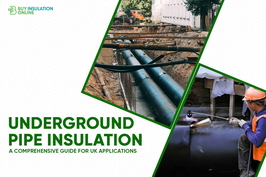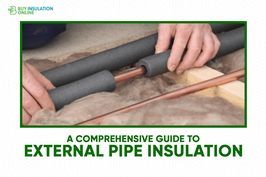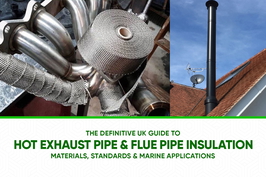Exterior Pipe Insulation Wrap
Exterior pipe insulation wraps are specifically designed to protect pipes from extreme temperatures, moisture, and external damage. Common materials utilised include polyethylene, foam, fiberglass, and mineral wool, each suited for different applications such as hot water lines or outdoor environments.
Proper installation is essential for effective insulation. This involves thoroughly cleaning the pipes, overlapping the insulation layers, and sealing any gaps to maintain optimal performance. Additionally, applying weather-resistant coatings can enhance durability and longevity.
For further insights on selecting, applying, and maintaining these insulation wraps, it is beneficial to explore additional resources tailored to your needs.
Types of Exterior Pipe Insulation Materials
There are various types of exterior pipe insulation materials, each specifically designed to cater to different requirements and environmental conditions.
Polyethylene insulation is both flexible and lightweight, making it particularly suitable for outdoor cooling systems, especially for cold water and chilled pipes.
It's resistant to moisture absorption, ensuring its durability in outdoor settings.
Polyisocyanurate (PIR) is a high-performance foam that provides excellent thermal efficiency and fire resistance.
This makes it ideal for use with hot fluids and in harsh weather conditions.
Polystyrene and polyurethane are effective insulators for both low and high-temperature pipes, with polyurethane offering robust moisture resistance, making it especially beneficial for refrigeration pipes.
Fibreglass, known for being lightweight and straightforward to install, is commonly used for hot water and steam pipes, particularly when protected with weatherproof jacketing.
Mineral wool and cellular glass are specialised options that excel in providing fire resistance and water-impermeability, respectively.
Choosing the right insulation material is crucial for ensuring energy efficiency and protection against the elements, making it an essential consideration for any outdoor piping system.
Benefits of Using Exterior Pipe Insulation Wraps
Exterior pipe insulation wraps provide numerous significant advantages that enhance the protection and efficiency of piping systems. They effectively reduce heat loss, resulting in decreased energy expenses and the maintenance of a consistent water temperature. This not only helps to avoid the need for costly reheating but also minimises environmental impact. Additionally, these wraps protect pipes from freezing, which can lead to bursts and water damage, particularly in colder regions. Insulation also curtails condensation build-up, thereby reducing the risk of rust, corrosion, and mould growth. For workplaces, insulated pipes contribute to a safer environment, as they are less likely to cause burns or accidents and operate more quietly. Moreover, insulation mitigates deterioration caused by moisture and external chemicals. In summary, employing insulation wraps prolongs the lifespan of pipes, reduces maintenance costs, and fosters a safer, more efficient setting. Insulation also plays a crucial role in protecting pipes from external impacts and environmental hazards, further ensuring longevity and integrity. Here's a concise overview:
Benefit |
Key Point |
Result |
| Energy Efficiency | Reduces heat transfer | Saves on utility bills |
| Freeze Prevention | Stops pipes from freezing | Avoids costly repairs |
| Corrosion and Damage Control | Slows rust and deterioration | Increases pipe lifespan |
Incorporating exterior pipe insulation wraps is a wise investment for both residential and commercial piping systems, ensuring long-term benefits and enhanced performance.
Installation Tips for Effective Insulation Coverage
Proper preparation of the pipe surface is essential to ensure that the insulation adheres effectively and functions as intended. Before commencing the wrapping process, it's important to ensure that the surface is free from dirt, oil, and moisture. Cleanliness of the pipe surface enhances bond strength and insulation performance. Utilizing effective overlap techniques is crucial; each layer should cover approximately half the width of the previous wrap. This practice helps to prevent any gaps that could diminish the insulation's performance. Additionally, sealing all joints, seams, and overlaps with tape or adhesive is vital. This step maintains a robust vapour barrier, keeping moisture at bay and securing the insulation against environmental factors.
Prepare Pipe Surface
Thoroughly preparing the pipe surface is vital for achieving effective insulation coverage. Proper cleaning removes dirt, grease, rust, and loose coatings, ensuring that the insulation adheres well and remains durable.
It's advisable to use wire brushes, solvents, or abrasive blasting, and always allow surfaces to dry completely to prevent moisture being trapped beneath the wrap.
Carefully inspect pipes for signs of corrosion, rough patches, and leaks, addressing any issues prior to the application of insulation. Smooth surfaces facilitate a tight seal, reducing air gaps and maximising the effectiveness of insulation.
Remove all dirt, grease, and rust before beginning
Check for moisture and repair any leaks or condensation
Ensure surfaces are smooth and free from loose debris
Proper Overlap Technique
Achieving effective insulation coverage relies heavily on proper overlap techniques during installation. Insulation should be wrapped from the lowest point of the pipe, spiralling upwards while maintaining even pressure to avoid gaps and wrinkles. Each layer must overlap the previous one by at least half its width, with a typical overlap of a few inches for improved heat retention. Wraps should overhang each other by half their width for continuous protection. Water ingress often occurs at lap joints if overlaps are insufficient, making correct overlap critical. For corners, elbows, and tees, utilise specially cut pieces that fit snugly, overlapping additional material at any changes in direction. Secure the wrap with moisture-resistant tape or wire periodically along the pipe’s length, ensuring that the insulation remains tight without compression. Proper overlap guarantees a consistent barrier, maximising insulation effectiveness across the entire surface of the pipe.
Seal All Joints
Sealing all joints in pipe insulation is essential to guarantee continuous protection against moisture and heat loss. Proper sealing prevents water from penetrating the insulation and minimises energy loss. It's advisable to use weather-resistant laminate tape with pressure-sensitive adhesive. The tape should be sufficiently wide to effectively cover lap and butt joints. Before applying the tape, it's crucial to ensure that the surfaces are clean and dry, free from dust or oils, to maximise adhesion and prevent water ingress. Additional tape strips can be used to reinforce vulnerable areas or complex fittings. Regular inspection and maintenance of the tape will help ensure that the insulation remains in good condition and continues to provide protection from weather elements. Proper sealing also contributes to preventing pests and dirt from entering the insulation, which can compromise its effectiveness treatment of insulation. Effective sealing is vital for maintaining efficient and durable pipe insulation coverage. - Opt for wide tape for improved coverage and sealing. - Ensure surfaces are clean before applying tape. - Reinforce joints with additional tape where necessary.
Cost Considerations for Pipe Insulation Options
Selecting the appropriate pipe insulation for outdoor applications necessitates careful consideration of both initial costs and ongoing expenses. Different materials exhibit a range of prices, installation complexities, and durability levels. Foam wraps are generally affordable and straightforward to install, yet they may deteriorate more quickly when exposed to outdoor elements. On the other hand, fibreglass insulation offers enhanced durability, though it tends to be more expensive and can be challenging to fit properly. Aluminium foil insulation, while higher in initial cost, delivers exceptional weather resistance and longevity. Efficient installation methods can also influence overall costs, so choosing materials that are easy to work with can reduce labor expenses.
Material |
Cost Range |
| Foam tubular | Low to moderate |
| Fibreglass | Moderate |
| Aluminium wrap | Higher |
Labour costs can vary based on the flexibility and ease of fitting of the material chosen. Higher-quality options, although initially more costly, might lead to savings over time due to reduced maintenance and replacement needs. In the end, striking a balance between the initial investment and the anticipated long-term savings is crucial in making the best choice for insulating exterior pipes. This decision not only ensures efficient energy use but also contributes to a collective effort in caring for our community infrastructure.
Durability and Environmental Factors to Keep in Mind
The durability of exterior pipe insulation is significantly influenced by the properties of the materials employed, the environmental conditions they encounter, and the quality of installation and protection.
Various materials possess different levels of resistance to environmental challenges. For instance, fiberglass insulation is known for its robustness and superior temperature resistance, whereas elastomeric rubber is effective at managing temperature fluctuations and mechanical stress. Materials with low thermal expansion coefficients are particularly beneficial in preventing damage caused by thermal changes.
Environmental factors such as extreme cold, heat, moisture, and UV exposure can hasten deterioration if the insulation isn't properly suited for these conditions. UV protection is especially important for outdoor applications, as prolonged exposure can degrade certain materials, leading to performance issues over time.
Therefore, it's crucial to consider the following:
Select materials that are appropriate for your local climate to avert issues like cracking or warping.
Conduct regular inspections to identify any signs of moisture damage or UV degradation.
Employ protective coatings or jacketing to enhance resistance to physical damage.
By adhering to these guidelines, you can significantly extend the lifespan and maintain the performance of your pipe insulation.
Proper installation, routine maintenance, and the use of suitable materials are essential for achieving optimal durability in exterior applications.
Best Applications for Different Insulation Materials
Different insulation materials are tailored for specific applications based on their unique properties and the conditions they encounter.
Polyethylene is particularly effective for cooling systems due to its flexibility and lightweight nature. It's ideal for both residential and commercial cold water lines. The pipe's internal bore size, combined with its O.D., influences the choice of insulation thickness for optimal thermal performance. The ease of installation makes it especially suited for underground or concealed pipes, where the risk of mechanical damage is minimal.
Polyisocyanurate, commonly known as PIR, is designed for high-temperature applications such as hot water and steam pipes, along with HVAC systems. It offers exceptional thermal insulation and fire resistance, making it a reliable choice in these environments. Its high fire-resistant properties are important for safety in various building applications.
Polystyrene is best utilised in low-temperature settings like refrigeration and chilled water pipes. It's known for its dependable moisture resistance, ensuring optimal performance under colder conditions. The insulation's density and compatibility with different pipe sizes are critical factors in selecting the right product.
Polyurethane stands out for outdoor applications, particularly in wet or damp conditions. Its durability and low thermal transfer properties make it highly effective in various external environments. Proper insulation thickness helps prevent heat loss and protect against freezing in exposed outdoor pipework.
Lastly, fibreglass insulation is suitable for hot water, steam, and HVAC ducts. It provides efficient insulation while also offering benefits such as fire resistance and noise reduction. Ensuring the correct insulation thickness is essential to maximize energy efficiency and safety in demanding applications.
How to Choose the Right Insulation for Your Pipes
How can the appropriate insulation material be identified for specific pipe requirements? The key lies in understanding the pipe’s operating conditions and exposure. For high temperatures, materials like polyisocyanurate or fibreglass are effective due to their excellent thermal resistance. Pipes located outdoors require UV and moisture-resistant options, such as flexible elastomeric rubber foam. To prevent condensation on cold pipes, closed-cell insulations like nitrile rubber or foam plastic are particularly effective. Fire safety is paramount, so materials such as polyisocyanurate and fibreglass with aluminium facings are often recommended. Additionally, environmental considerations are important, with recycled fibreglass contributing to sustainability. Different insulation types also offer varying levels of durability and noise reduction, which can be critical depending on the application. Consider the pipe's temperature and exposure conditions. Match insulation with the environment, ensuring UV resistance for outdoor use. Prioritise fire safety and sustainable features for long-lasting benefits.
Maintenance and Longevity of Wrapped Pipes
Regular inspections of pipe insulation are essential for identifying signs of damage or moisture accumulation early, which helps to prevent further complications.
Timely repairs to cracks or tears using suitable materials will maintain the insulation’s effectiveness and prolong its lifespan. Additionally, applying protective coatings can safeguard the insulation from environmental factors, thereby reducing deterioration over time.
Ensuring that insulation remains intact and in good condition is vital for the overall efficiency of the piping system.
Inspect Insulation Regularly
Regularly inspecting the insulation on exterior pipes is crucial for maintaining its effectiveness and prolonging its lifespan. Routine assessments allow for the early detection of potential damage, such as cracks, tears, or moisture stains, which could lead to corrosion or energy loss.
Pay particular attention to common problem areas, including joints, bends, valves, and hard-to-reach spots near firewalls or hangers. Employ non-destructive methods during your checks to prevent any harm to the insulation.
Key points to consider during inspections include:
Examining for cracks, splits, or torn material
Checking for signs of moisture or rust on pipe surfaces
Ensuring that the insulation is secure and not deformed
Repair Damaged Areas Promptly
When damage occurs to pipe insulation, addressing it promptly is essential to maintain its protective function and extend the lifespan of the wrapped pipes. Small tears, punctures, or cracks can lead to heat loss, freezing, or mould growth. Reinforcing damaged areas with appropriate patch materials and sealing them quickly ensures the insulation remains airtight and waterproof.
Utilising the right tools, such as specialised tapes and foam segments, enhances the durability of the repair. Delaying repairs can result in minor issues escalating, jeopardising the pipes and increasing energy costs. Timely fixes not only promote efficiency but also foster a sense of community by safeguarding shared resources.
The table below illustrates how swift action can restore confidence and protect our vital systems.
Damage Type |
Immediate Action |
Long-Term Benefit |
| Small tears | Patch with compatible tape | Prevent heat loss |
| Moisture spots | Dry and reinforce | Avoid mould and decay |
| Cracks or brittleness | Replace or seal promptly | Extend pipe lifespan |
| Gaps or loose areas | Reseal and reinforce | Maintain insulation integrity |
Use Protective Coatings
Protective coatings are essential for preserving the durability and performance of wrapped pipes, effectively preventing corrosion and extending their lifespan.
These coatings form a moisture barrier that inhibits rust and corrosion, particularly in outdoor or humid environments. By shielding pipes from weather damage and environmental elements, they also help to reduce maintenance requirements.
When used in conjunction with insulation, protective coatings offer further defence against moisture infiltration, ensuring that pipes remain dry and efficient.
Outdoor pipes particularly benefit from weatherproof and UV-resistant coatings that can endure sunlight and rain, thereby enhancing their longevity.
Key benefits of protective coatings include:
Safeguarding pipes against rust, corrosion, and weather-related damage.
Enhancing energy efficiency by sealing insulation gaps.
Preventing mould and condensation, which can lead to further deterioration and mould growth.
Enhancing Durability With Weather-Resistant Coatings
Weather-resistant coatings play a crucial role in enhancing the durability of exterior pipe insulation wraps by protecting them from environmental factors.
These coatings, such as elastomeric rubber with a plastic outer layer, offer robust resistance against weather, UV rays, moisture, and mechanical damage.
PVC jackets are commonly employed to shield insulation from sun and water exposure.
Meanwhile, polyurethane and acrylic coatings provide waterproofing and flexibility, making them suitable for various climates.
Certain coatings, like Tuffcoat, feature a semi-gloss finish that eliminates the need for repainting, helping to maintain a tidy appearance over time.
Additionally, self-sealing tape enhances the installation process by ensuring tight seals that prevent the ingress of water and air.
Collectively, these weather-resistant coatings enable pipes to endure challenging outdoor conditions, thereby reducing maintenance needs and extending the lifespan of the insulation.
Conclusion
Choosing the right exterior pipe insulation wrap is essential and depends on the material, climate, and budget. Proper installation enhances the effectiveness and longevity of the insulation, while weather-resistant coatings can provide additional protection for pipes. Regular maintenance is vital to ensure that the insulation remains effective over time.
By understanding the various options available and following application tips, property owners in the UK can successfully prevent pipe freezing and damage. Investing in quality insulation wraps not only protects pipes but also contributes to reducing energy costs and minimising maintenance needs. This makes insulation wraps a practical choice for long-term pipe management.
With a variety of materials and thicknesses to choose from, it's important to select insulation that suits your specific requirements. Whether you are dealing with copper, plastic, or other types of pipes, ensuring that they are well-insulated can safeguard your property against the harsh UK winters.
Prioritising pipe insulation will not only enhance the durability of your plumbing system but also provide peace of mind knowing you have taken proactive measures to protect your home.
